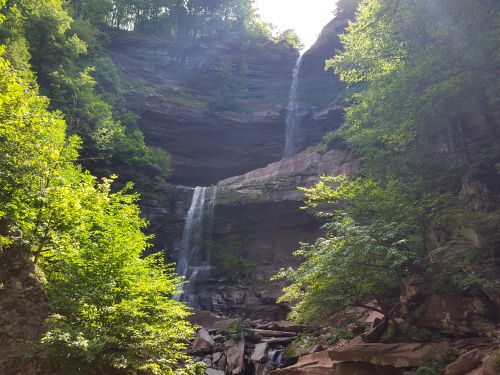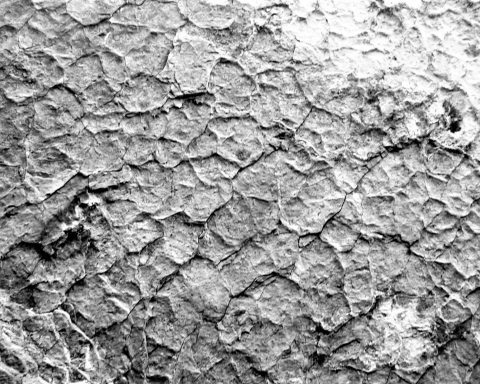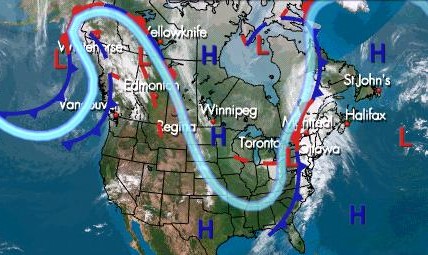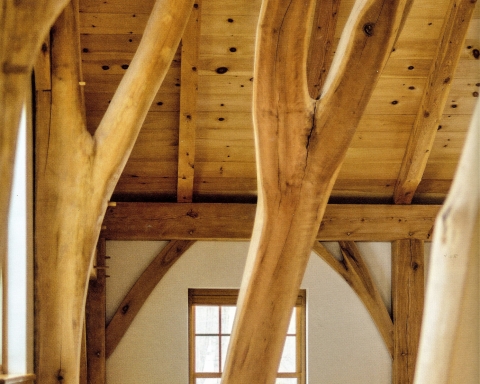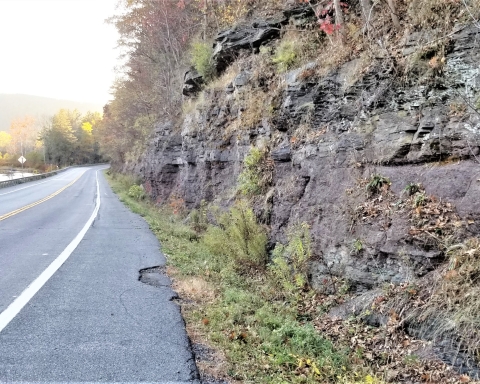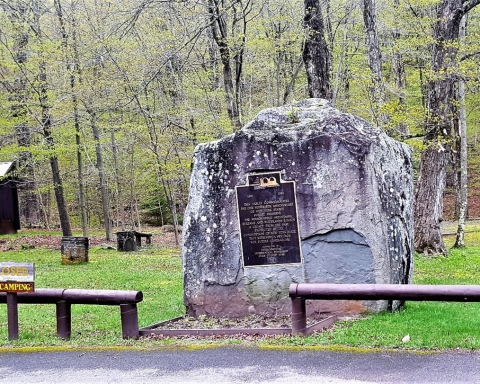Fossil feathers?
The Catskill Geologists; The Mountain Eagle, Apr. 24, 2020
Robert and Johanna Titus
Last week we visited several locations in East Durham where we saw geological features called joints. These are fractures that formed within the rocks hundreds of millions of years ago. Each joint fracture is the product of an instantaneous snapping within the rock. Unlike most fractures these are absolutely straight, especially when viewed from above. Take a look at our first photo.
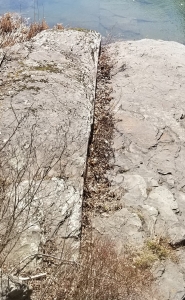
But what do we see if we can get a chance to look at them sideways? That’s commonly the case and when we do get this second view, we typically see a smooth flat vertical surface. But some views are more revealing; take a look at our second photo. This one shows a vertical view of a joint, but this one is only nearly, not perfectly flat. This surface is covered by what geologists call plumose structures. The name comes from the superficial similarity of these structures with bird feathers. Once again, as is so often the case, we have some explaining to do. Plumose structures date back to the very moment when that joint formed, to the actual instant when it snapped.
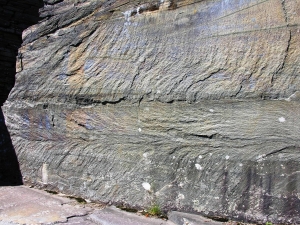
The rock in our second photo is Devonian in age; it is about 385 million years old. It’s sandstone and probably its sand was deposited in the channel of a Devonian river. Those sands hardened into rock and subsequently it became involved in one of the greatest mountain building events in Earth history. That was the Acadian Orogeny, an event that produced an early version of the Appalachians, called the Acadian Mountains. The rocks in our photo were, for a long time, compressed by that collision. During this event, these rocks lay deep within the bowels of those ancient mountains. There they were subjected to truly intense pressures. Imagine all this for just a moment. Typically, rocks have a good deal of “give” to them and they can absorb the stress pretty well. It wasn’t until much later that they encountered trouble.
The mountain building event we are talking about involved a great landmass that you might call Europe, colliding with North America. That is where the compression came from. It only got worse later on when Africa collided with North America. Mountain building collisions, no matter how large, only last so long. Eventually this history of collisions ended, and, in fact, a breakup of the land masses occurred. Both Europe and Africa drifted back to the east toward where they are today. That released all the pressure that had been compressing our rocks.
In this new relaxed state of affairs, these rocks began to expand back to their original state. They became brittle, and that’s when the fracturing occurred. A plumose structure is a special type of crack. Essentially, the fracturing began at the base of the “feather” (left on our photo) and expanded away from that point. As the fissuring “rippled” through the rock it created the plumose pattern.
This was an exciting moment; things happened fast. Its’s our understanding that the fracturing occurred at something that approached the speed of sound! And it must have made a lot of noise too, a very loud pop or snap. All this amounts to another of those most remarkable features so often found in rocks. This was not just a little bit of deformation; this must have been a real earth thumping event. For all practical purposes this is a petrified earthquake. Think about that for a moment. You can actually preserve the evidence of an ancient earthquake in the rocks!
And photograph it.
Contact the authors at randjtitus@prodigy.net. Join their facebook page “The Catskill Geologist.” Read their blogs at “thecatskillgeologist.com.”
